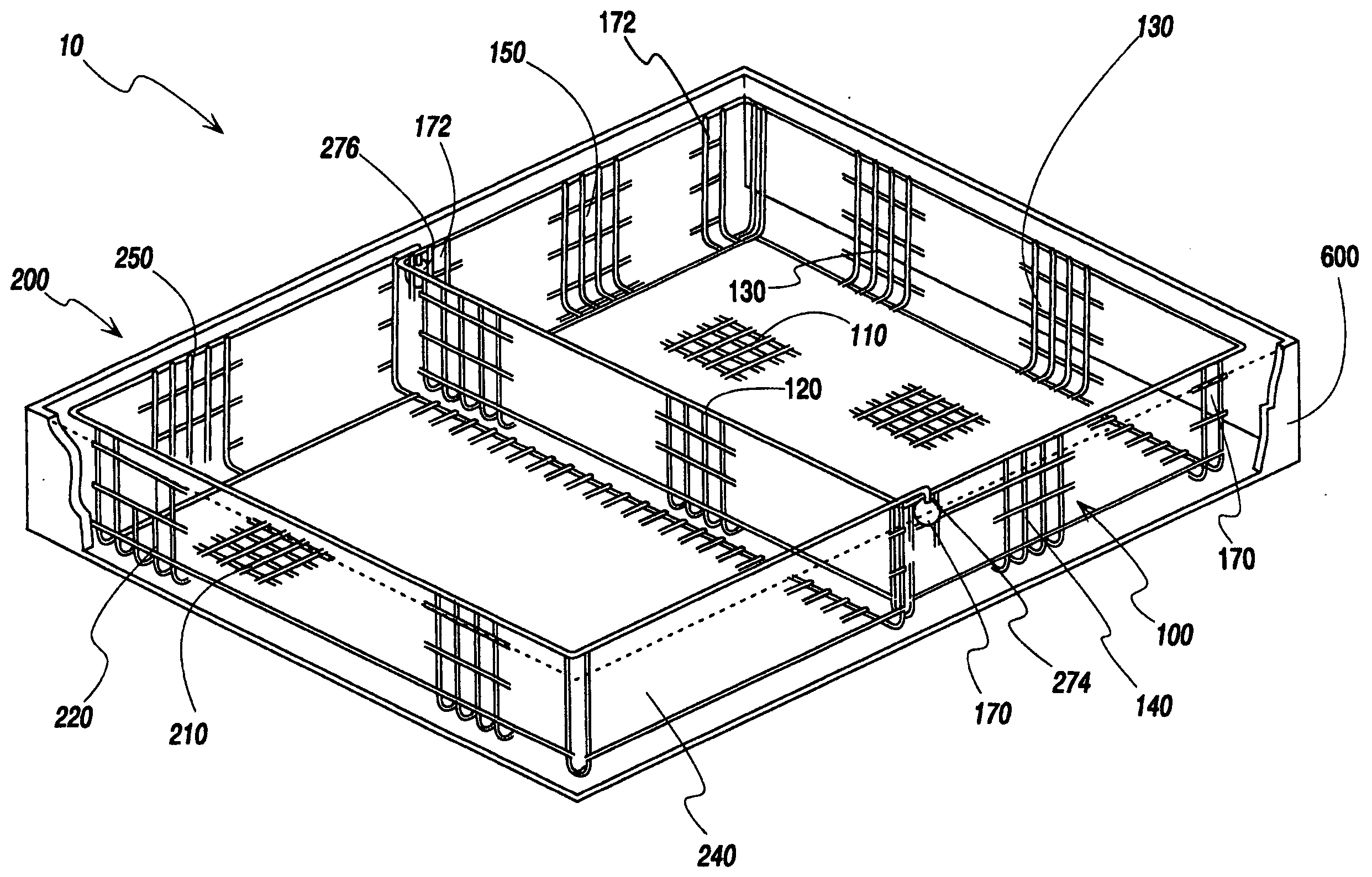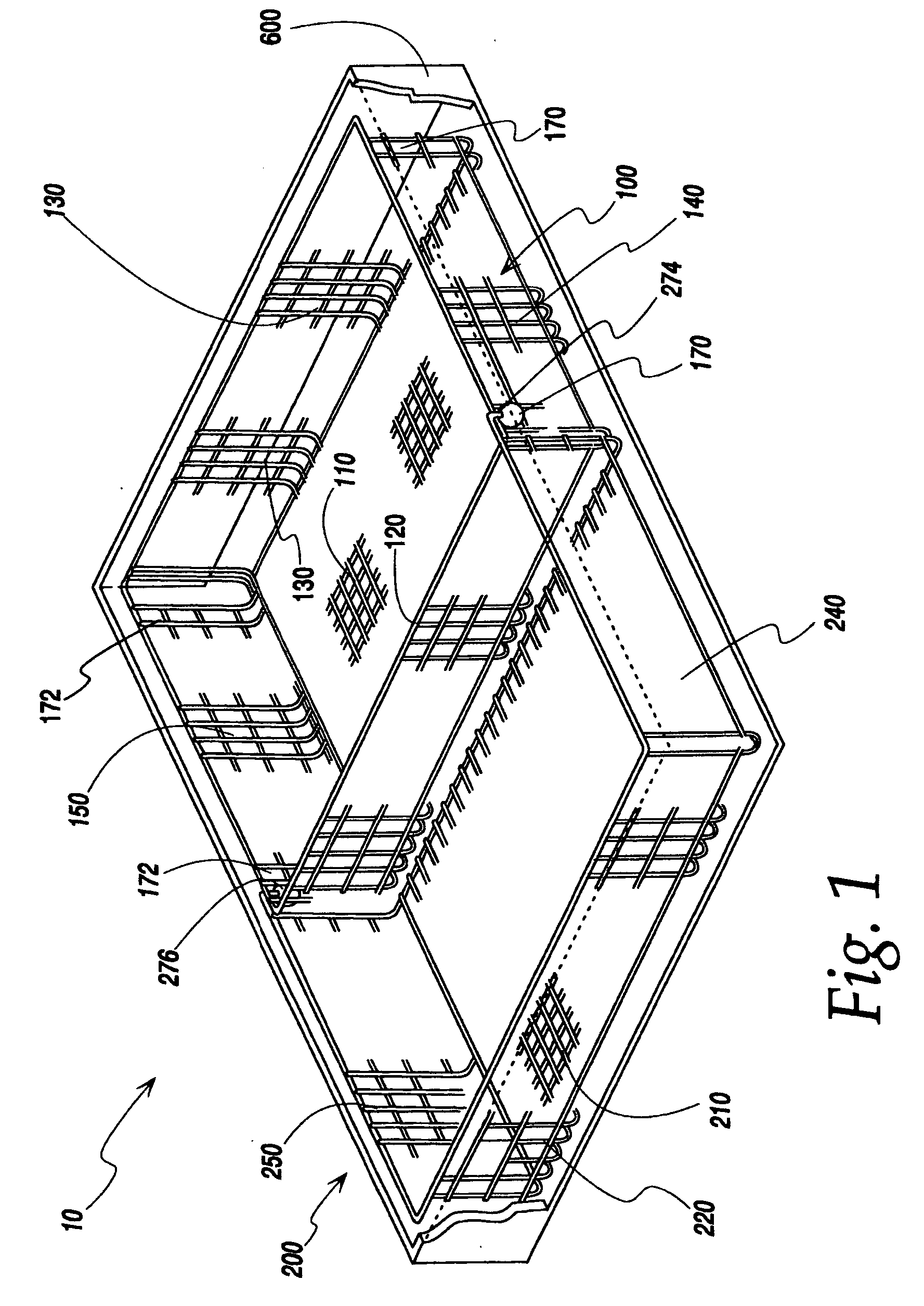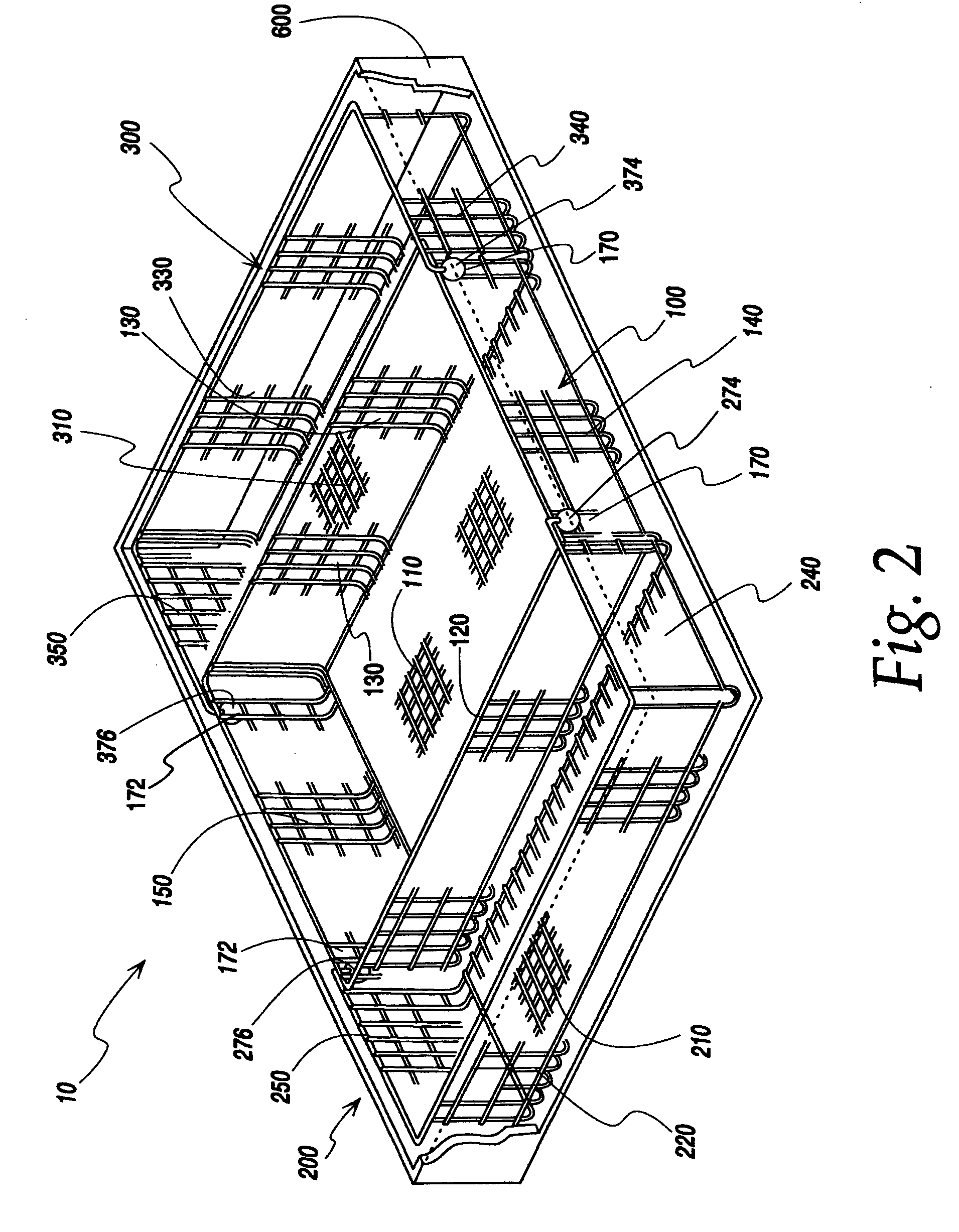Expandable drawer organizer
a drawer organizer and expandable technology, applied in the field of expandable drawer organizers, can solve the problems of underutilization of drawer storage capacity, underutilization based on drawer area and individual box dimensions, and the user of such items, and achieve the effect of maintaining the desired interchangeability of the organizer and optimizing the storage of the organizer
- Summary
- Abstract
- Description
- Claims
- Application Information
AI Technical Summary
Benefits of technology
Problems solved by technology
Method used
Image
Examples
Embodiment Construction
[0035]FIGS. 1-22 illustrate various embodiments of an expandable drawer organizer in accordance with the present invention.
[0036] Referring to FIG. 1 one embodiment of a two tray expandable drawer organizer is generally shown at number 10. The expandable drawer organizer 10 of the present invention generally comprises a base tray 100 and a first nesting tray 200. The base tray 100 may have a given length and width to allow it to be slidably received by the first nesting tray 200. This arrangement serves to permit the expandable drawer organizer 10 to accommodate drawers of varying dimensional characteristics permitting a user to optimize the utilization of drawer space without compromising flexibility. The base tray 100 and a first nesting tray 200 may be set at a predetermined length wherein a locking mechanism 50 (FIG. 4-6) comprised of an engagement of the front panel protuberance 274 (FIG. 6) and rear panel protuberance 276 (FIG. 6) with the corresponding front panel recess in ...
PUM
 Login to View More
Login to View More Abstract
Description
Claims
Application Information
 Login to View More
Login to View More - R&D
- Intellectual Property
- Life Sciences
- Materials
- Tech Scout
- Unparalleled Data Quality
- Higher Quality Content
- 60% Fewer Hallucinations
Browse by: Latest US Patents, China's latest patents, Technical Efficacy Thesaurus, Application Domain, Technology Topic, Popular Technical Reports.
© 2025 PatSnap. All rights reserved.Legal|Privacy policy|Modern Slavery Act Transparency Statement|Sitemap|About US| Contact US: help@patsnap.com



